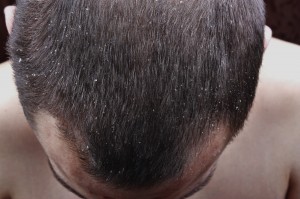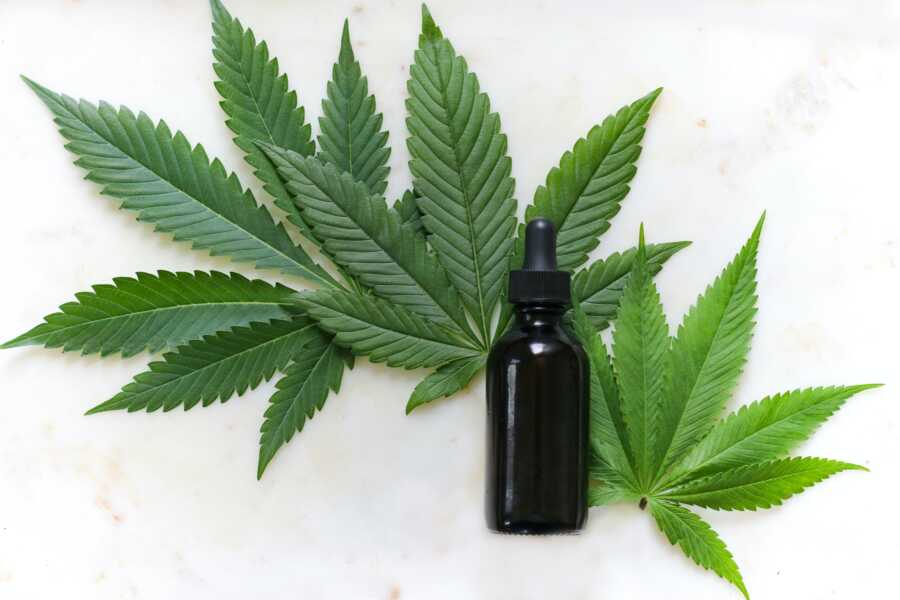Dandruff involves a long-term scaling of the scalp with occasional irritation, itchiness, and redness from ‘damage’ to the skin’s natural peeling mechanism1, 2 .
It is a common skin condition that affects almost half of the adult population and does not depend on a person’s ethnicity or gender3. One popular product for treatment of these symptoms is the Sebcur® medicated shampoo, which contains 4% salicylic acid as its main ingredient. As a result, it is important for us to see if salicylic acid is effective and safe to treat dandruff. We will also try to figure out whether it is better or worse when compared to other treatments such as ketoconazole and zinc pyrithione, which are also used to treat dandruff4.
What causes Dandruff?
The currently accepted theory states that a fungus called Malassezia mainly causes dandruff in humans7. Sometimes, this microbe grows out of control due to higher than normal production of an oily secretion called sebum and outer skin cells7. The fungus feeds on the sebum (oily secretion), breaking it down into structures called free fatty acids, which are very irritating to the skin. This is the main cause of an itchy scalp experienced in dandruff8. In conclusion, too much oil production in the scalp creates an overgrowth of a fungus that leads to dandruff9, 10.
What is “Sebcur”?
Sebcur® is a non-prescription medicated shampoo that is applied directly to the scalp. The shampoo contains 4% salicylic acid, a keratolytic agent – this means it softens the skin and causes peeling of lesions. It is available as a 120 mL bottle and can be used for many conditions that involve scaling of the skin such as dandruff, seborrhea, and psoriasis of the scalp5, 6. Regular Sebcur® does not contain coal tar so it doesn’t have the tar odor and staining issues when compared to Sebcur/T®. Sebcur is typically massaged onto the affected areas 2-3 times per week, and left on for 5-10 minutes before rinsing it off. This allows for the absorption of the medication.
How does Sebur® work?
Salicylic acid in strengths between 3% and 6% acts as a peeling agent4. Therefore, 4% salicylic acid in Sebcur® shampoo peels off the outer layer of the scalp in patients with dandruff. Salicylic acid, although still not fully understood, works by breaking down a structure that acts like a glue to hold the outermost layer of skin cells together 11, 12, 13. Salicylic acid achieves this by releasing a protein found in the glue-like structure 11, 12, 13. When this protein is released, it breaks down this glue-like structure, which makes it easier for the old skin cells from the top layer to fall off 11, 12, 13. In addition to being a peeling agent, salicylic acid helps to stop excess sebum production which reduces the fungus growth14.
What does the evidence say?
Unfortunately, there is nothing directly comparing salicyclic alone to another single ingredients in order to draw a direct conclusion; however, there are a few studies where salicylic acid is mixed with another ingredient and then compared.
A study comparing an anti-dandruff shampoo containing salicylic acid with piroctone olamine (another ingredient used to fight dandruff found in many different shampoos) to another shampoo containing only zinc pyrithione, demonstrated that the piroctone olamine and salicylic acid shampoo was slightly more effective in reducing the severity of scaling15. Each individual in the study received both shampoos and was instructed to treat one side of the scalp with one and the other side with the other. The dandruff scores for each side of the scalp were calculated to compare the effectiveness of both study shampoos15.
When a shampoo with salicylic acid 3% and ciclopirox olamine (an antifunal) was compared to ketoconazole (2%, Nizoral) shampoo, it was demonstrated that both the ciclopirox olamine/salicylic acid shampoo and the Nizoral shampoo were both effective in the treatment of dandruff and seborrhea 16. However, those treated with ciclopirox olamine and salicylic acid shampoo experienced less itching7.
Although the reviewed literature lacks comparison of a shampoo containing salicylic acid alone to other alternatives, it could be concluded that shampoos containing salicylic acid are indeed effective in treating dandruff and seborrhea but are not necessarily better than zinc pyrithione shampoos or ketoconazole shampoos.
Are there any safety concerns?
The most common side effects of Sebcur® shampoo are irritation and a stinging sensation especially if it comes in contact with the eyes or broken skin. Irritation may be relieved with the use of a mild conditioner or an oil-free moisturizer. However, if irritation persists, one must discontinue the product and contact a pharmacist or a physician17. This product is readily absorbed through the skin and should not be used by pregnant or breastfeeding women, unless directed by a physician6. Sebcur® is not recommended for children who are less than 2 years old, and in adolescents under the age of 16 who also suffer from shingles, chickenpox or the flu. It should also not be used if you has an allergy to salicylic acid17. People with diabetes or poor circulation need to contact their physician before using Sebcur®6.
Bottom line:
Based on the evidence, Sebcur® is an effective topical treatment for resolving the symptoms of dandruff and seborrhea in most patients. Sebcur® shampoo is as effective as other popular treatments such as ketoconazole and zinc pyrithione for treating dandruff and seborrhea; however, it may help resolve the symptoms of itchiness more than other products. Side effects of Sebcur® include irritation and a stinging sensation.
Authors:
Kamran Bahadorani, Vince Seo, Mira Lozyk, Dong Jin Kim, Naina Hindocha, Tina Chow, and Gabriel Kim, BSc. Pharm Candidate(s)
Faculty of Pharmacy and Pharmaceutical Sciences
University of Alberta
Edited and Reviewed by the Health Aisle Team
References
- Hay, R.J., Graham-Brown, R.A. (1997). Dandruff and seborrheic dermatitis: causes and management. Clinical and Experimental Dermatology, 22(1): 3–6.
- Pierard-Franchimont, C., Hermanns, J.H., Degreef, H., Pierard, G.E. (2000). From axioms to new insights into dandruff. Dermatology, 200: 93–8.
- Seité, S. S., Paries, J. J., Reygagne, P. P., Hamidou, Z. Z., Jouanique, C. C., Perez-Pala, G. G., & Rougier, A. A. (2009). A lipohydroxyacid-containing shampoo improves scalp condition and quality of life in patients with seborrheic dermatitis and light-to-moderate scalp psoriasis. Journal Of Cosmetic Dermatology, 8(2): 108-113. doi:10.1111/j.1473-2165.2009.00431.x
- Quadri, G., Cavallero, W., & Milani, M. (2005). Efficacy of a new antidandruff thermophobic foam: a randomized, controlled, investigator-blinded trial vs. ketoconazole 2% scalp fluid. Journal Of Cosmetic Dermatology, 4(1): 23-26. doi:10.1111/j.1473-2165.2005.00154.x
- Dermatek Pharmaceuticals. (2006). Sebcur product. Retrieved from http://www.dermtek.com/products/sebcur.html
- Salicylic acid products (2014). Retrieved from Lexi-Comp Online database.
- Gupta, A.K., Batra, R., Bluhm, R., et al. 2004. Skin diseases associated with Malassezia species. Journal of the American Academy of Dermatology, 51(5): 785–798.
- Draelos, Z.D. 2005. An evaluation of topical 3% salicylic acid and 1% hydrocortisone in the maintenance of scalp pruritus. Journal of Cosmetic Dermatology, 4(3): 193-7.
- Seite, S., Paries, J., Reygagne, P., Hamidou, Z., Jouanique, C., Perez-Pala, G., Rougier, A. 2009. A lipohydroxyacid containing shampoo improves scalp condition and quality of life in patients with seborrheicdermatitis and light-to-moderate scalp psoriasis. Journal of Cosmetic Dermatology, 8(2): 108-13. doi: 10.1111/j.1473-2165.
- Saint-Léger D. [The history of dandruff and dandruff in history. A homage to Raymond Sabouraud]. Ann Dermatol Venereol 117(1): 23–7.
- Bamford, J.T. (1983). Treatment of tinea versicolor with sulfur-salicylic shampoo. Journal of the American Academy of Dermatology, 8(2): 211–213.
- Brysk, M.M., Rajaraman, S. (1992). Cohesion and desquamation of epidermal stratum corneum. Prog Histochem Cytochem, 25: 1–53.
- Corcuff, P., Fiat, F., Minondo, A-M., Lévèque, J.L., Rougier, A. (2002). A comparative ultrastructural study of hydroxyacids induced desquamation. European Journal of Dermatology, 12: XXXIX–XLIII.
- Sebcur Drug Information. Retrieved from http://www.catalog.md/drugs/sebcur.html.
- Lodén, & Wessman. (2000). The antidandruff efficacy of a shampoo containing piroctone olamine and salicylic acid in comparison to that of a zinc pyrithione shampoo. International Journal Of Cosmetic Science, 22(4): 285.
- Squire, R., & Goode, K. (2002). A randomised, single-blind, single-centre clinical trial to evaluate comparative clinical efficacy of shampoos containing ciclopirox olamine (1.5%) and salicylic acid (3%), or ketoconazole (2%, Nizoral) for the treatment of dandruff/seborrhoeic dermatitis. The Journal Of Dermatological Treatment, 13(2), 51-60.
- Salicylic acid. (2014). Retrieved from DynaMed.

